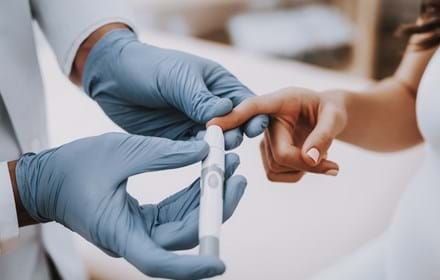
DRWF Research: New findings about insulin-producing cells could lead to new treatments for people with type 1 diabetes
Researchers in Europe make discovery on how glucose is delivered to insulin-producing cells.
A discovery on the role of blood supply and delivery of glucose to the insulin-producing beta cells in the pancreatic islets by researchers in Sweden could lead to new treatments for people living with type 1 diabetes.
The collaborative study by researchers at Karolinska Institutet in Sweden and the Helmholtz Diabetes Research Center in Germany found that primary cilia, hair-like protrusions on endothelial cells inside vessels, play an important role in the process of sending glucose to insulin-producing cells.
The findings of the study, part funded by DRWF sister organisation Diabetes Wellness Sverige in Sweden, were recently published in eLife and could be relevant for transplantation treatments for people living with type 1 diabetes, as formation of functional blood vessels is important for the treatment to be successful.
When blood glucose levels rise, beta cells in pancreatic islets release insulin into the blood stream.
Insulin triggers glucose uptake in a variety of tissues including fat and muscle. Glucose and other nutrients must cross the vascular barrier to reach beta cells inside pancreatic islets. Similarly, newly released insulin must cross the blood vessels into the blood stream to reach its target tissues.
Endothelial cells can be found on the inside of blood vessels. Vessels in the pancreatic islets form a dense network with many small pores in the endothelial cell membrane, facilitating the exchange of molecules across the vessel wall.
Researchers investigated how pancreatic islet vessel formation and function were affected by primary cilia, small hair-like structures found on beta cells and endothelial cells.
Professor Per-Olof Berggren's research group at The Rolf Luft Research Center for Diabetes and Endocrinology, the Department of Molecular Medicine and Surgery, Karolinska Institutet in Sweden and Dr. Jantje Gerdes' research group at the Helmholtz Diabetes Research Center in Munich, Germany, have previously shown that insulin secretion is modulated by cilia on beta cells.
For the latest study, researchers examined Bardet-Biedl Syndrome, a disease caused by cilia dysfunction and were able to show that when endothelial cilia are dysfunctional, the blood supply to the pancreatic islets is less efficient. Newly formed vessels have larger diameters and fewer pores that allow nutrients to pass through the vessel wall.
Yan Xiong, Assistant Professor at the Department of Molecular Medicine and Surgery, Karolinska Institutet and study lead author, said: "Consequently, the smallest blood vessels, the capillaries, become less efficient at delivering glucose to the beta cells.”
The formation of functional blood vessels is an important factor in transplantation therapies.
Beta cell replacement therapy could potentially treat and cure type 1 diabetes, and the formation of a functional interface between beta cells and blood vessels is an important step towards longer graft survival and diabetes remission.
Dr Berggren concluded: "This study improves the understanding of how primary cilia facilitate efficient blood vessel formation, and potentially offers novel therapeutic avenues to enable effective pancreatic islet transplantation in diabetes and possibly transplantation of other organs as well.”
Read the report in eLife
Further reports to follow – visit DRWF news page
Support DRWF by making a donation here
Find out more about DRWF-funded research here
Find out more about DRWF fundraising here
For latest update follow DRWF on Facebook, Instagram and Twitter
To receive the charity’s latest bulletins as they become available, please sign up here
Read DRWF diabetes information leaflets here
Join the Diabetes Wellness Network here
Recent News


